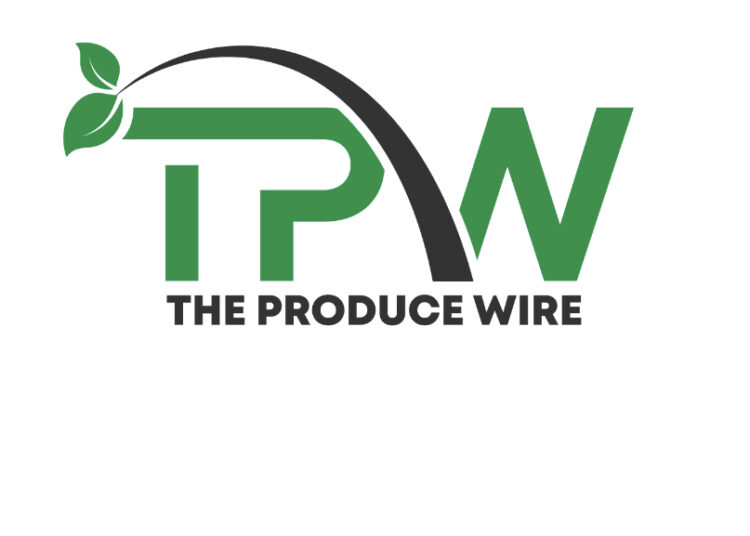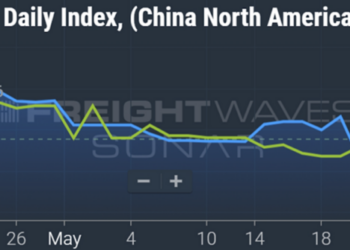Internet of Things start-up Wiliot recently launched a food -safety initiative that works to create transparent and traceable supply chains using ambient IoT technology.
Wiliot’s ambient IoT food- safety initiative — a partnership with iFoodDS and Trustwell — comes ahead of the Food and Drug Administration’s new Food Traceability Final Rule (known as FSMA 204), which begins enforcement in January 2026.
“[FSMA 204] is a challenging rule, because you’re spanning changes up and down the supply chain ,— not just your organization, but your suppliers as well,” Steve Statler, Wiliot’s chief marketing officer, told FreightWaves. “They’re having to deal with different interpretations of the rule across all of their customers, up and down the supply chain.”
Wiliot is a company developing ambient IoT technology being used by some of the world’s largest brands, including food and pharmaceutical companies. Wiliot, founded in 2017 in Israel, has customer operations in San Diego.
Related: Semantic Visions draws on global media deep dive to build ESG index
The focus of FSMA 204 is to facilitate faster identification and removal of potentially contaminated food from the market, and lower the risk of foodborne outbreaks of bacteria such as salmonella and listeria.
The Centers for Disease Control and Prevention estimates that 48 million people get sick, 128,000 are hospitalized, and 3,000 die from foodborne diseases each year in the United States.
According to the FDA, food traceability is the ability to track the movement of a food product and its ingredients through all steps in the supply chain. Traceability involves documenting and linking the production, processing, and distribution chains of food products and ingredients.
When FSMA 204 comes into force in 2026, it will install additional recordkeeping requirements and significant real-time tracking of foods such as cheese, fruits, vegetables, seafood, and ready-to-eat deli salads.
“The other thing that is tricky about [FSMA 204] is no food-safety person has the resources to comply in isolation, even a vice president of food safety can’t wave a magic wand and make it happen,” Statler said. “This is, by its very nature, hugely cross functional, and getting more than a few people in different functions to agree is really hard. You’re having to, at the core of it, get your store operations, your supply chain, your logistics, your finance people, together. This is not cheap. You’re either going to be spending a lot of money on capital, or a lot of money on people, or maybe there’s a third category, cost of goods.”
There are currently several different types of food-tracing systems, including barcode technology, radio frequency identification (RFID), DNA-based traceability, blockchain technology, and using smartphone apps, according to Food Chain Magazine.
Wiliot’s partnership with iFoodDS and Trustwell will incorporate its ambient IoT data and technology into both company’s safety and compliance platforms.
Seattle-based iFoodDS is a provider of connected traceability, quality and food-safety solutions. Salem, Oregon-based Trustwell provides software and services for compliance and food safety in the food and supplement industries.
Statler said that FSMA 204 can be seen as a catalyst for using ambient IoT devices in a company’s supply chain.
Ambient IoT is a battery-free wireless technology that is being incorporated in multiple wireless standards — such as Bluetooth, 5G Advanced, 6G and Wi-Fi — allowing food products to be connected to the internet at lower costs compared with RFID technology, Statler said.
“We see this as the perfect catalyst for moving to the next generation of automation, the next generation of Internet of Things, ambient IoT, these battery free Bluetooth devices that are basically kind of an Apple air tag, only they are a few cents and the size of a postage stamp,” Statler said. “These aren’t $1,000 or $10,000, they’re $36. You put a $36 ambient IoT reader by the dock door when you’re shipping and by the back of the restaurant when you’re receiving, then essentially you don’t need anyone to be there.”
Wiliot’s ambient IoT devices will have visibility across the supply chain that is fully traceable, compliant and data-driven, the company said.
“This is a catalyst to go beyond compliance. If you get this right, then you’re set to reach a level of efficiency, automation, quality, safety and reputational strength that’s worth the effort,” Statler said.
The post Wiliot aims to help secure food supply chain using ambient IoT appeared first on FreightWaves.













